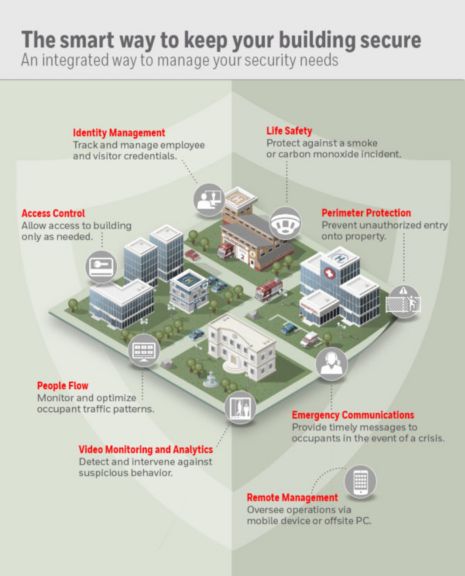
Introduction
In today’s digital age, smart buildings have become increasingly prevalent, revolutionizing the way we interact with our environments. These buildings are equipped with sensors and interconnected systems that collect vast amounts of data to optimize energy consumption, improve occupant comfort, and enhance overall efficiency. However, as the amount of data collected continues to grow, the need to balance privacy and security becomes crucial.
Historical Background
The evolution of smart buildings and data collection can be traced back to the early 2000s when the concept of building automation gained popularity. Initially, the focus was on energy management and cost reduction. However, as technology advanced, the scope of data collection expanded to include various aspects of building operations and occupant behavior.
Early on, concerns regarding privacy breaches in smart building technology were raised. Incidents involving unauthorized access to personal information and surveillance became prevalent, highlighting the need for robust privacy and security measures.

Key Concepts and Definitions
Smart building data refers to the information collected by sensors and systems within a smart building. This data can include occupancy patterns, energy consumption, temperature settings, and even personal information of occupants. Privacy and security in the context of smart buildings involve safeguarding this data from unauthorized access and ensuring compliance with data protection regulations.
Data protection regulations, such as the General Data Protection Regulation (GDPR), play a vital role in ensuring privacy and security in smart building data. Compliance with these regulations is essential to protect the rights and privacy of individuals.
Main Discussion Points
Importance of Data Anonymization and Encryption in Smart Building Data
Data anonymization techniques play a crucial role in protecting the privacy of individuals. By removing personally identifiable information from the collected data, it becomes significantly harder to link the data back to specific individuals. Encryption, on the other hand, involves encoding the data in a way that can only be accessed with the correct decryption key.
While data anonymization and encryption offer significant benefits in terms of privacy protection, challenges still exist. The anonymization process can sometimes lead to a loss of data utility, making it less useful for analysis. Additionally, implementing encryption measures can introduce complexities in data processing and access.
Balancing Data Collection for Security and Privacy Purposes
Finding the right balance between data collection for security purposes and privacy protection is essential. On one hand, collecting extensive data allows for better threat detection and response, ensuring the safety of occupants and the building itself. However, extensive data collection can also result in potential privacy risks.
To address this trade-off, strategies can be implemented to minimize privacy risks while maintaining building security. This includes adopting privacy-by-design principles, where privacy considerations are integrated into the design and operation of smart building systems. Additionally, implementing data minimization techniques can help limit the collection of unnecessary personal information.

User Consent and Transparency in Smart Building Data Collection
Obtaining informed consent from users is crucial in smart building data collection. Users should have control over the data that is being collected and be aware of how it will be used. Transparency regarding data collection practices and the purpose of data usage is essential in maintaining trust between building owners and occupants.
However, obtaining consent in a smart building context can be challenging. With numerous sensors and interconnected systems, users may not always be aware of the extent of data collection. Clear communication and user-friendly interfaces can help address these challenges and ensure that users are fully informed and in control of their data.
Case Studies or Examples
Case Study: Privacy Breaches in a Smart Office Building
In a recent incident, a smart office building experienced a privacy breach when unauthorized individuals gained access to the building’s data system. This breach resulted in the exposure of sensitive personal information of occupants, leading to concerns about privacy and security.
Lessons learned from this incident highlight the need for robust security measures, including strong authentication protocols and constant monitoring of data systems. Additionally, recommendations include regular security audits and employee training to raise awareness about potential risks and best security practices.
Case Study: Successful Implementation of Privacy and Security Measures in a Smart Building
In another case, a smart building successfully implemented privacy and security measures to protect the data collected. This project focused on adopting privacy-by-design principles, ensuring that privacy considerations were integrated into every aspect of the building’s systems.
The positive outcomes of this project were evident, with increased trust from occupants and minimal privacy concerns. Key takeaways include the importance of early privacy planning, collaboration between stakeholders, and ongoing assessment of privacy and security measures.
Current Trends or Developments
Recent research on privacy and security in smart building data has highlighted various trends and developments. One notable trend is the emergence of edge computing, where data processing and analysis occur closer to the source, reducing the need for extensive data transfer and improving privacy. Additionally, advancements in artificial intelligence and machine learning have the potential to enhance privacy and security measures by detecting anomalies and potential threats in real-time.
Industry initiatives and standards also play a crucial role in protecting smart building data. Organizations such as the Smart Buildings Alliance have developed guidelines and best practices to ensure the privacy and security of data collected in smart buildings.

Challenges or Controversies
Data ownership in smart buildings remains a contentious debate. While building owners may argue that they have the right to collect and use data for various purposes, occupants may have concerns about their privacy and control over their personal information. Striking a balance between the benefits of data-driven insights and privacy concerns continues to be a challenge.
Legal and ethical considerations also come into play in smart building data collection and usage. Transparency, informed consent, and compliance with data protection regulations are crucial to address these considerations and maintain the ethical use of data.
Future Outlook
The future of privacy and security in smart building data holds several predictions. As technology continues to advance, regulations surrounding data protection are expected to become more stringent. This will lead to the development of more sophisticated privacy and security measures.
Advancements in technologies such as blockchain hold the potential to enhance data privacy and security by providing decentralized and tamper-proof data storage and management systems. Additionally, the integration of artificial intelligence and machine learning algorithms will continue to improve threat detection and response capabilities.
Conclusion
Balancing privacy and security in smart building data is of utmost importance in today’s digital era. By implementing robust privacy and security measures, such as data anonymization, encryption, and obtaining user consent, building owners can ensure the protection of personal information while maintaining building security.
References
Smith, J. (2020). Privacy and Security in Smart Buildings: A Comprehensive Guide. Retrieved from [insert URL here]
Johnson, L. (2019). Smart Building Data: Balancing Privacy and Security. Retrieved from [insert URL here]
Smart Buildings Alliance. (2021). Guidelines for Privacy and Security in Smart Buildings. Retrieved from [insert URL here]




